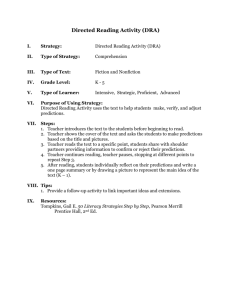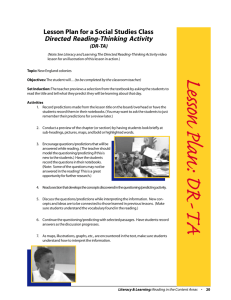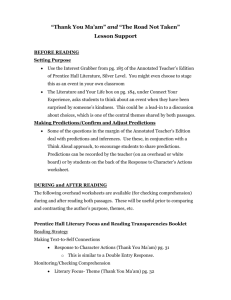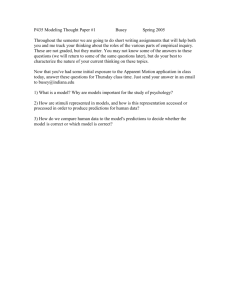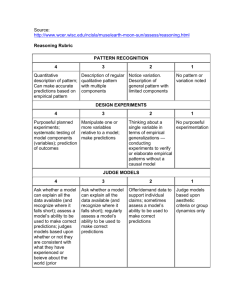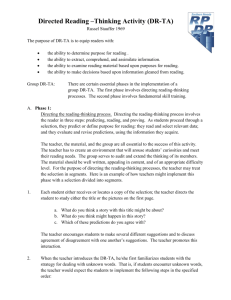Literacy Strategy Directed Reading-Thinking Activity (DR-TA)
advertisement
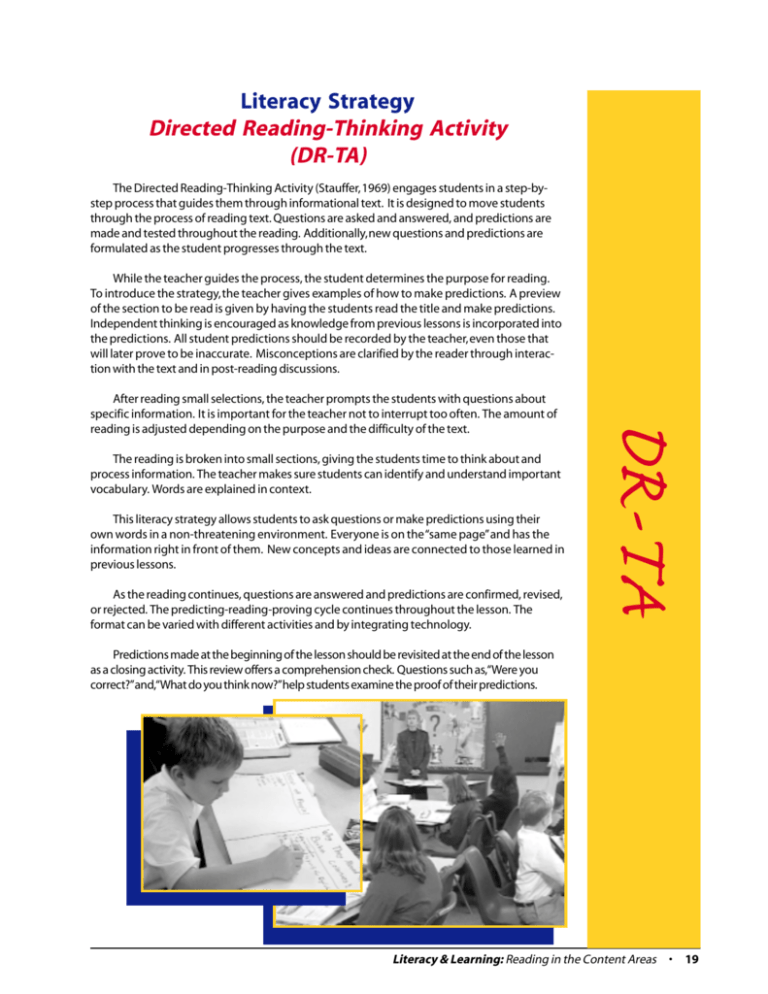
Literacy Strategy Directed Reading-Thinking Activity (DR-TA) The Directed Reading-Thinking Activity (Stauffer, 1969) engages students in a step-bystep process that guides them through informational text. It is designed to move students through the process of reading text. Questions are asked and answered, and predictions are made and tested throughout the reading. Additionally, new questions and predictions are formulated as the student progresses through the text. While the teacher guides the process, the student determines the purpose for reading. To introduce the strategy, the teacher gives examples of how to make predictions. A preview of the section to be read is given by having the students read the title and make predictions. Independent thinking is encouraged as knowledge from previous lessons is incorporated into the predictions. All student predictions should be recorded by the teacher, even those that will later prove to be inaccurate. Misconceptions are clarified by the reader through interaction with the text and in post-reading discussions. The reading is broken into small sections, giving the students time to think about and process information. The teacher makes sure students can identify and understand important vocabulary. Words are explained in context. This literacy strategy allows students to ask questions or make predictions using their own words in a non-threatening environment. Everyone is on the “same page” and has the information right in front of them. New concepts and ideas are connected to those learned in previous lessons. As the reading continues, questions are answered and predictions are confirmed, revised, or rejected. The predicting-reading-proving cycle continues throughout the lesson. The format can be varied with different activities and by integrating technology. DR-TA After reading small selections, the teacher prompts the students with questions about specific information. It is important for the teacher not to interrupt too often. The amount of reading is adjusted depending on the purpose and the difficulty of the text. Predictions made at the beginning of the lesson should be revisited at the end of the lesson as a closing activity. This review offers a comprehension check. Questions such as,“Were you correct?”and,“What do you think now?”help students examine the proof of their predictions. Literacy & Learning: Reading in the Content Areas • 19
